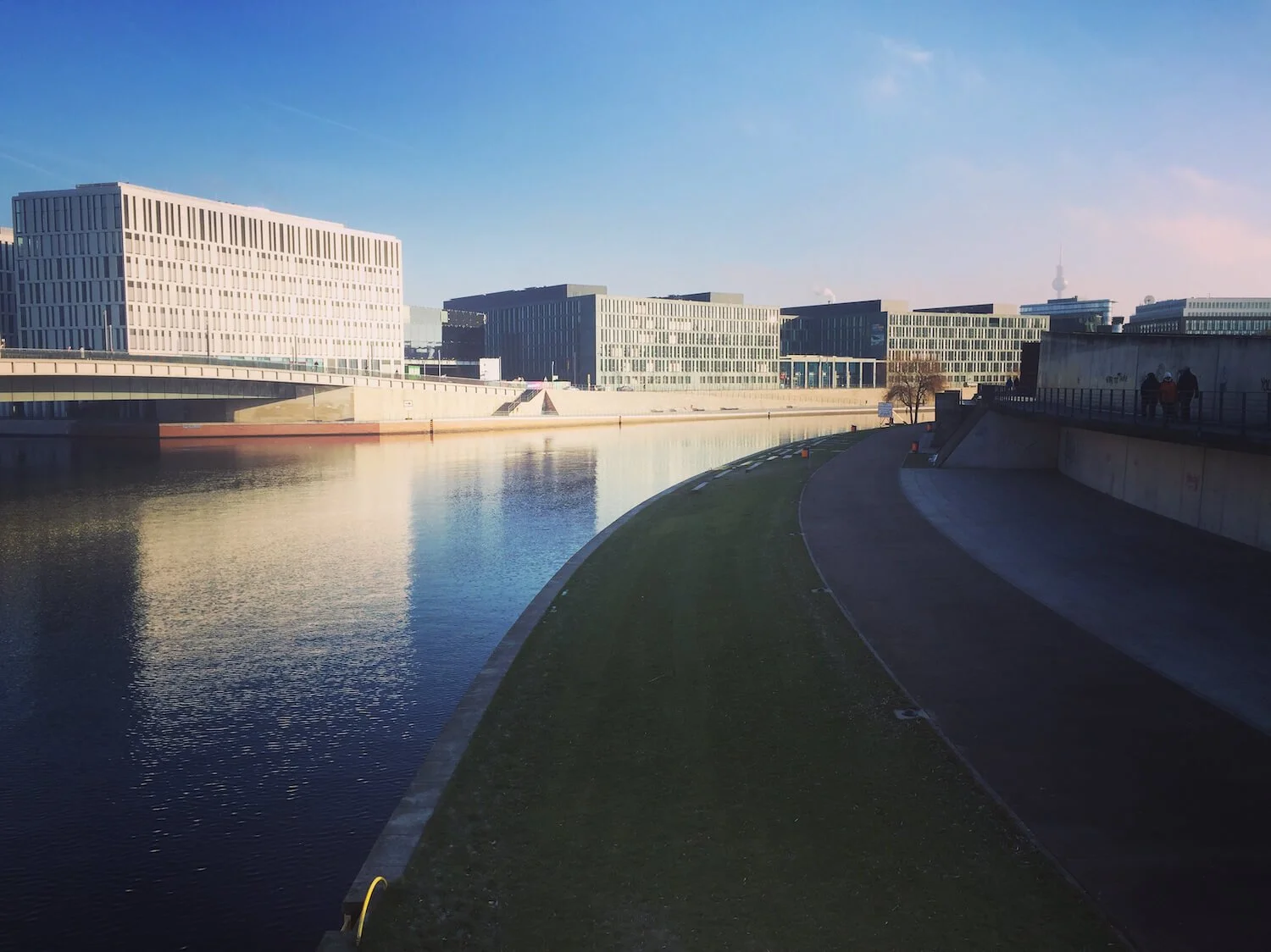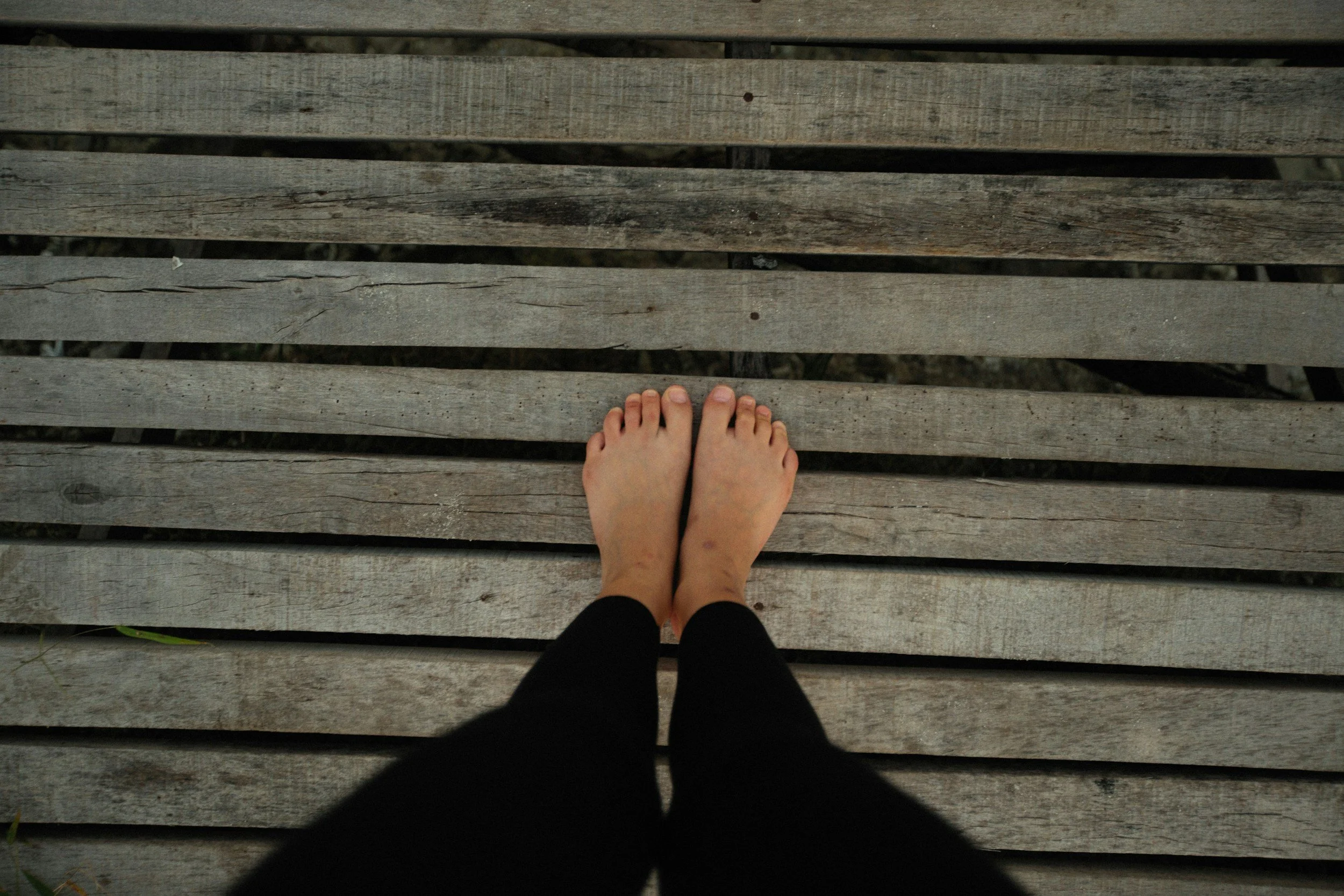Yoga, daleks and the i360
Bank of the river Spree, Berlin
(Edited version of a talk given to staff and students of the department of Architecture, University of Brighton, as part of the TwinTalks series 2016/17)
A few years ago I took time out of architectural practice to train as a yoga teacher. As part of that journey I became interested in the question of how and why we are the way we are; how the human body had evolved over millennia as a response to the forces of gravity, the terrain in which we lived, the tools we developed, the social challenges we faced. I learned about the human sensorimotor system, that we have more than five senses and also that in modern western culture the sense which tends to dominate all the others is eyesight. That is to say, our visual sense supercedes most other information our nerve endings are telling our brain, if we allow it to.
From this pan-sensory perspective Architecture as it is commonly created in western cities occurs to me differently and it becomes apparent that critical discourse relating to architectural design centres around visual and aesthetic parameters to the exclusion of other aspects of human potential. This is partly the fault of Architects who themselves are trained in technical drawing as a means of representation and it is noticeable that as a design tool, architectural perspectives lend themselves to flat smooth floor planes. Is this one reason why many of us work or live in places with floor surfaces which are more or less smooth? Sometimes it’s as if a seamless ground plane has been rolled out across an urbanised landscape. Thresholds become flattened, texture is minimised, much of the ground is conveniently designed to suit wheeled transport. It is easy to imagine that if Daleks wanted to take over the earth, they would surely have easy passage in our cities and a generation of wheeled robots would encounter mostly suitable topology if they were tasked with cleaning our streets.
For anyone visiting my home city of Brighton, the flattening smooth formula has reached a particular expression here on the seafront with the British Airways i360, a tourist attraction offering a 20 minute ascending ride inside a glass capsule. It’s without doubt a visual delight to rise steadily above the rooftops and witness spectacular views of the coast. But interestingly from a sensory point of view there is no noise, no vibration, no sensation of movement, no smell. It’s sensory deprivation except for the visual, all achieved with immaculately well oiled cables and pulleys working silently away in the background. Better get a drink from the bar if only to restore sensory equilibrium.
But there are impacts from all of this smoothness. For one thing, a ground surface free of trip hazards doesn’t require us to be particularly adaptable and may even result in our becoming less agile and less mobile. And when humans are less mobile we become physically stiffer, either because our muscles forget what to do, or because our brains get confused about the signals sent to our muscles. Biomechanics, the study of structure and function of biological systems, has something to teach us here. Hips, knees and ankles are all musculo-skeletal structures which developed over the course of our evolution to roll and move. On variable terrain we discover these joints are strong and versatile. We may also find when we have spent time exploring an ancient forest there’s a positive effect on our wellbeing and engagement with an expanded sensory spectrum may be part of that. Conversely, when our feet only encounter the ground in one plane, there may be a direct effect on our wellbeing and our joints only ever experience one kind of loading, which wears them out over time.
the human foot is adapted to a range of surface textures
In his book “The Eyes of the Skin”, architectural theorist Juhani Palasmaa explores this dysfunction in relation to our environment. “With the loss of tactility and details crafted for the human body - and particularly for the hand - architectural structures become compulsively flat, sharp-edged, immaterial and unreal. The detachment of construction from the realities of matter and craft further turns architecture instead into stage sets for the eye, into a scenography devoid of the authenticity of matter and construction.” (palasmaa p34)
Palasmaa goes on to usefully explore what he calls the Haptic city - Haptic meaning any form of interaction involving touch. He suggests architects around the world are beginning to discover this Haptic world and use it to inform design. If so, it’s not immediately apparent how such a change is occurring.
If this haptic world hasn't reached a town near you yet and architects are hell bent on designing numbness into human experience, how else do we remedy all the sensory deprivation? If we are so inclined we can spend time in yoga classes. One area I like to explore in workshops involves the touch of the sole of the foot on the ground. This is typically where gravity, sensing, and place all coincide. But if not, at least we can all appreciate Brighton beach. That’s where we get in touch with ourselves, smell the salty air, feel the shock of the cold water as we enter the waves. And if sharp pebbles feel a little excruciating underfoot, at least we can rest assured we are restoring a flavour of the haptic variety we’ve been missing out on.
Ref: The Eyes of the Skin: Architecture and the Senses, Juhani Palasmaa, John Wiley & Sons, 2012


